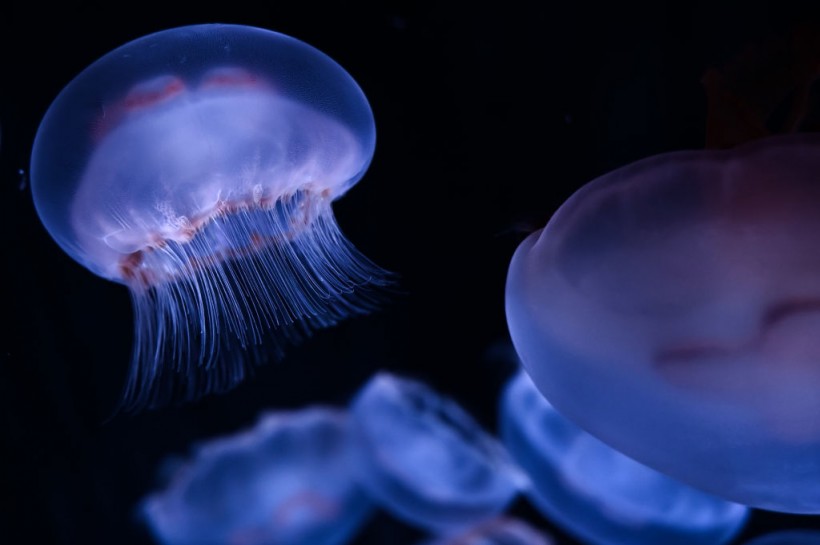Every summer, many people encounter accidents at sea, particularly due to the painful sting of jellyfish. But throughout every vacation we spend at the beach, most of us do not know how complex the thin 'tentacles' of these creatures work.
Stinging Organelles, Powerful Weapons Hidden in Marine Animals

This picture was taken on January 16, 2019, and shows jellyfish in a tank during the opening of the new Jellyfish section of the Aquarium of Paris. - The new display of the Aquarium of Paris is now among one of the world's first jellyfish collections and aims to raise public awareness of climate change and ocean conservation.
In recent biological research, scientists could see what happens when species such as jellyfish use their powerful weapons. Moreover, they have found an association between the organelles of the animals with their cousins, such as the sea anemones and corals.
Scholars from Stowers Institute for Medical Research observed the cells of stinging organelles in Nematostella vectensis, also known as a starlet sea anemone.
The investigation involved an advanced microscopic imaging technique that let the authors get ahold of the tiny details of the biophysical models and discover how the defensive mechanism of the animals worked and remained elusive for nearly 100 years, reports PhysOrg.
The findings gathered from the organelles will open new pathways that will contribute to the studies of novel medical therapies and other microscopic applications that could solve human health problems.
The team focused on the functions that make the nematocysts work. These cells are the cnidarian stinging organelles that fire up force from various marine animals' systems, mostly from the tentacles.
Experts utilized three-dimensional electron microscopy side-by-side with the gene knockdown method to observe the kinetic energy produced by nematocysts in real-time. Through the osmotic pressure and elastic energy stored in the sub-structures of the cell, many animals could use skills such as poisoning and piercing.
ALSO READ: 400-Year-Old Italian Mummy Provide Insights About the Mysterious Evolutionary History of E. Coli
Tentacle Cells of Cnidarians Offer Concepts to Biomedical Therapies and Imaging Techniques
The 3D electron microscopy allowed the scientists to see the explosive discharge and biomechanical transformation of the architecture of the nematocysts of Nematostella vectensis as they fired.
According to the paper, the stinging operation of the cells was completed within just a few milliseconds, making it the fastest biological process that transpires in nature.
Through the imaging devices, the authors saw multiple discharges across various threads of the tentacles. The first few phases of this process were so fast that they had to record the firing as detailed as possible.
Stowers Institute for Medical Research specialist and author of the research Ahmet Karabulut said that they were able to collect data on how the cells in the thread geometrically transformed with a "beautifully orchestrated process."
The changes that occur when the sea anemone fires its stinging defense mechanism would not give more knowledge just to the biomedical industry but also to the improvement of designs in engineered microscopic imaging models.
Emerging studies on medicine could also take significant approaches that would one day let us deliver safe, effective solutions and other therapeutic workarounds at a cellular level.
The study was published in Nature Communications, titled "The architecture and operating mechanism of a cnidarian stinging organelle."
RELATED ARTICLE: Microscopic Mites Living in Human Skin Slowly Becoming Normal Part of Our Bodies; How Did They Evolve?
Check out more news and information on Biology in Science Times.














